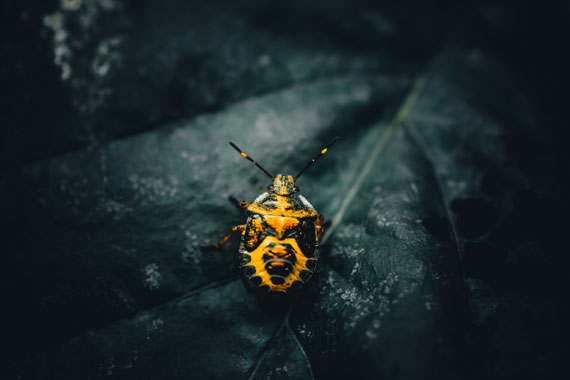When it comes to macro photography, there are few subjects as fascinating to shoot as insects. Typically, photographers opt to capture them in the studio to achieve the best results. However, shooting insects outdoors can be equally as rewarding. Seasoned wildlife photographer, Paul Miguel, has some enlightening insect photography tips to offer in his latest YouTube video.
Tip 1: Select The Right Camera & Modes
Paul shoots many subjects, varying his camera, lens, and gear accordingly. For insects, he generally opts for his Canon 1DX Mark I body and Canon 100mm f2.8 macro lens. As to modes, he suggests photographers play around with manual and autofocus to find the option that suits them best. Continuous tracking autofocus or AI Servo on Canon is a preference of his, especially for shooting larger insects in sunny conditions.
Tip 2: Think of Your Angle of Approach
When capturing insects in the wild, a photographer needs to think of more than just settings and gear. Paul advises that you plan out your approach beforehand and keep your camera as parallel as you can to the insect. Doing so causes the least disturbance while maintaining the maximum depth of field. When shooting, Paul also uses an extended leg as a pivot. That way, he can move forwards and backward without moving his feet, potentially making noise and disturbing the insect.
Tip 3: Perfect Your Manual Focus Technique
When shooting insects outdoors at such close range, a camera’s autofocus may struggle to keep up. That’s why Paul suggests photographers practice their manual focusing technique using their focus ring. It can also be difficult to balance and focus simultaneously. Instead, Paul gets into position, then does a rough focus, moving back and forth slightly while using continuous shooting.
Tip 4: Choose Where to Focus First
Typically, Paul focuses on an insect’s eye or head, but doing so is not so simple for insects that aren’t flat or posed so. Besides autofocusing issues, depth of field is reduced when shooting close-range insect macro photography — potentially leading to out-of-focus insect parts. To remedy this, Paul focuses on the insect mid-body or near where its wings or legs meet its head.

Insect photo captured by David Waite
Tip 5: Play With Aperture & Depth of Field
When photographing insects, you generally want to achieve a reasonably out-of-focus background. A blurry background better highlights the subject by causing less distraction to the eye. Generally, the closer you get to the subject, the shallower the depth of field becomes. But your aperture settings do also affect results. Paul suggests choosing a lower aperture of f/4 vs. f/8 or using a slower shutter speed to maintain a balance. You can also shoot further away and crop the image.
Tip 6: Learn Insect Behavior
Insects can be troublesome subjects to shoot as they tend to move a lot, particularly when feeding on flower heads. Paul suggests you learn more about the insect you’re shooting.
The more you know about your insect that you’re photographing, the more successful you’re going to be (shooting it)…
Alternatively, it’s best to put yourself in the right position instead of chasing your subject. Then wait until the insect moves into the perfect position to shoot it. That way, you can decide on the best angle regarding lighting and composition.
Conclusion:
Insect macro photography can be a rewarding, if arduous, pursuit, especially outdoors in uncontrolled conditions. Aside from the weather, one has to contend with insect behaviors and take care not to disturb whichever they’re pursuing. Paul’s insightful tips specify effective ways to circumnavigate these issues and get that perfect shot.
Like This Article?
Don't Miss The Next One!
Join over 100,000 photographers of all experience levels who receive our free photography tips and articles to stay current:





